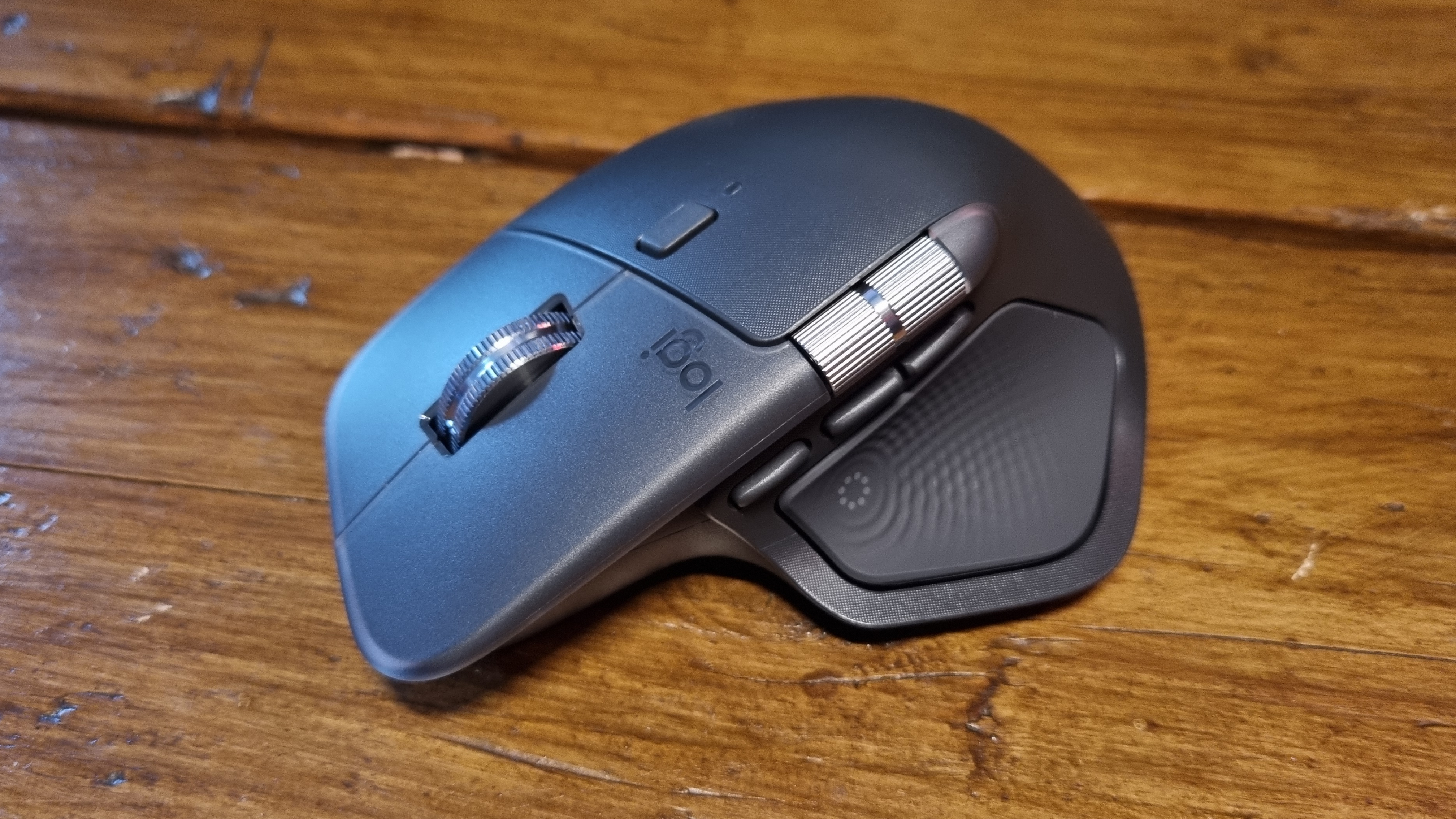Why It's Fun: Counter-Strike
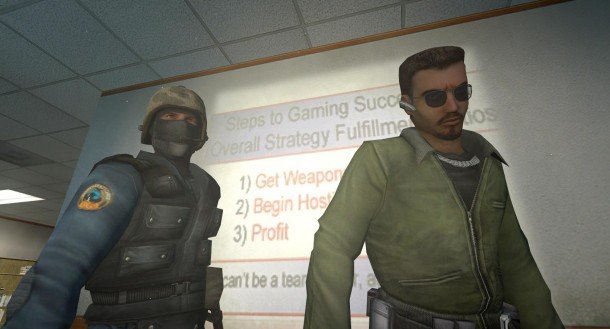
On the eve of Valve hitting go on Counter-Strike: GO, I thought it'd be useful to revisit why the once-mod continues to have its hooks in so many of us. Just like true love or a really outstanding taco, explaining what makes Counter-Strike good can be inexplicably tough to put into words. Go on, try. "It's, uh...tense? The guns feel nice. ...Teamwork?" Told you.
Read on for some notes on why I think Counter-Strike continues to be a classic. We'll have a CS:GO review up later this week.
SHORT ROUNDS
- Prompts the player to iterate on tactics; creates context for winning streaks, losing streaks, ties, coming from behind to win.
- Death is a time-out to reflect on the next round, creates oscillation between tension (being judged/spectated by teammates) and relief (watching/judging your teammates).
WEAPONS THAT "HAVE A MIND OF THEIR OWN"
- Takes skill, time to understand + control weapon behavior.
- High-fidelity hitboxes—where you aim matters fundamentally.
- But alternately, firing recklessly (spraying) can produce lucky kills.
- Uncertainty is fun (“Who's going to win this shootout?”).
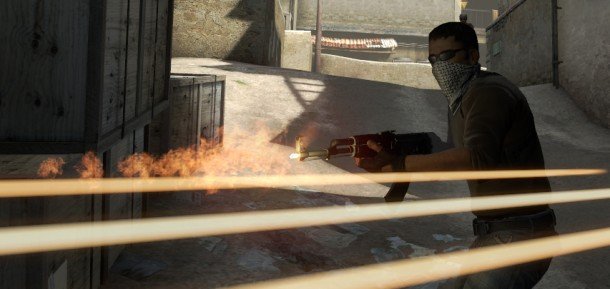
EXCELLENT MAP DESIGN
- Fixed spawns; easy to orient yourself (complexity rarely goes beyond two or three routes), nameable landmarks (“double doors,” “bridge,” “back office,” “near spawn,” “at B”).
- Constructive asymmetry; when sides swap, they also typically swap tactics sets/roles (cs_assault: Ts are well-protected defenders, CTs are sieging).
- Map design carefully tuned to account for player movement speed—equidistant chokepoints. CTs + Ts arrive at chokepoints if they both leave the spawn area with knives out. (e.g.: On cs_office as CT, if I'm going to snipe, I have to sprint to the outdoor hallway to get eyes on main hall in order to give myself an opportunity to catch Ts moving from their spawn to garage).
- CS' levels generally have a totally pristine appearance: they generally don't bear any evidence of combat until the round actually begins. This "blank slate" not only creates opportunities for the environment to convey valuable tactical information about what's happened (bullet holes, cracked windows, opened doors, broken grates, turned-over filing cabinets), but damaging the world itself can be inherently fun.
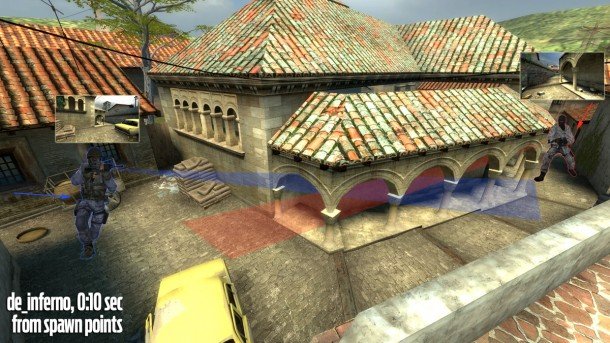
PURCHASING SYSTEM
- Players can buy weapons and equipment at the start of a round. This is a system that suits competitive play and builds a metagame throughout a match, and it makes the decision to not spend/be conservative a cost/benefit decision (typical second round choice: save up and hope to loot a rifle from a dead player, or spend now and be better-armed).
MEANINGFUL COUNTER-TACTICS
- In most situations, snipers can be countered by smoke/flash grenade, flanking, synchronized teamwork, or planting the bomb.
- In some situations, rushing can be countered with good positioning, waiting and listening, and/or long-range weapons.
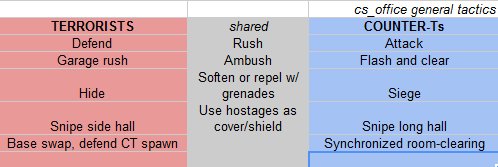
CULTURE
- Dead players form an instantaneous graveyard chat room/peanut gallery/sideline. This shared social space with opponents creates an opportunity for rivalries or other relationships to form between players (clan recruitment, heckling, complimenting).
- Weapons have reputations or even stigmas; knifing or pistoling someone wielding an AWP might be seen as a David/Goliath scenario.
- Zany maps ( de_rats , Mario Kart ), sprays, and server mods that offset the seriousness, create opportunities for pranking.
Keep up to date with the most important stories and the best deals, as picked by the PC Gamer team.

Evan's a hardcore FPS enthusiast who joined PC Gamer way back in 2008. After an era spent publishing reviews, news, and cover features, he now oversees editorial operations for PC Gamer worldwide, including setting policy, training, and editing stories written by the wider team. His most-played FPSes are Hunt: Showdown, Team Fortress 2, Team Fortress Classic, Rainbow Six Siege, and Counter-Strike. His first multiplayer FPS was Quake 2, played on serial LAN in his uncle's basement, the ideal conditions for instilling a lifelong fondness for fragging.

